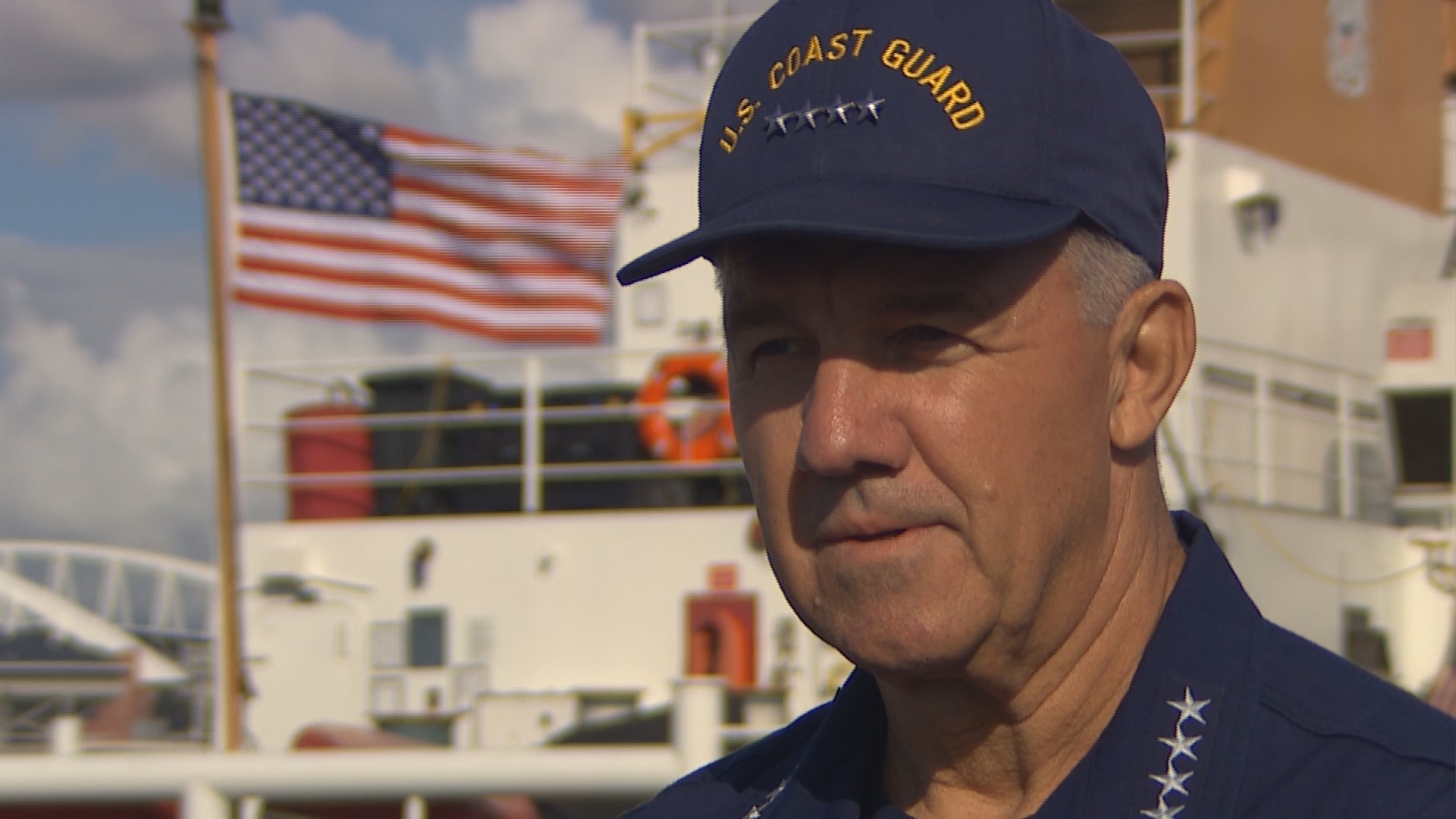SEATTLE — The U.S. Coast Guard Commandant visited Seattle this week with a message about keeping the economy moving as the nation’s waterways become more congested.
“If you really think about it ... 90% of all stuff on our shelves come from our ports,” said Admiral Karl Schultz.
Schultz has a lot of coastline to cover - more than 95,000 miles. As the U.S. Coast Guard's top officer, he's tasked with making sure shorelines are safe and keeping goods flowing through oceans, lakes, and rivers.
“This is a complex waterway and it's as complex as any in the nation,” Schultz said while on a tour of the Port of Seattle.
Schultz visited Puget Sound to meet with business and government leaders, and a Coast Guard base planning for the future.
Worldwide demand for marine commerce is expected to more than double by 2025, the Coast Guard said. All that additional traffic will require costly upgrades to the country's maritime infrastructure to keep ships and billions of dollars’ worth of goods moving on schedule.
The Port of Seattle is expanding to accommodate some of the world's largest container vessels, and a new cruise ship terminal is in the works.
The Coast Guard base in Seattle will also get more traffic when it becomes the homeport for a fleet of three new icebreakers.
“We have the property we have here today, would we be interested in conversations about some growth here? Potentially,” Schultz said.
The U.S. currently has two functioning polar icebreakers. One of them, the Polar Star, flooded, caught fire and had an electrical outage during its most recent trip to Antarctica.
“I've got tremendous confidence in the sailors and the crew, and we're spending about $15 million of taxpayer dollars on an annual basis to keep Polar Star limping forward. I'm confident we'll be able to get her through this period,” Schultz said.
The Coast Guard says governments, ports, and shipping companies, will all have to invest billions to modernize their waterfronts and prepare for a new generation of activity along the nation's shores.

